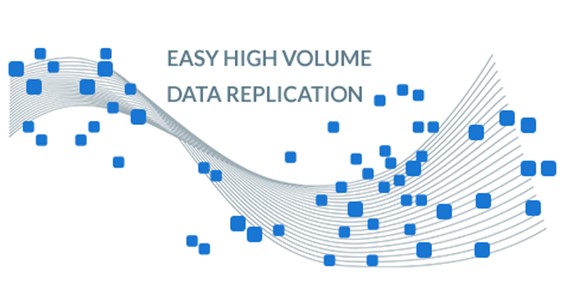Many enterprises today prefer SAP as their data storage repository and database management system. However, it is also seen that with the growth of data-driven applications there are delays inherent in the system due to the transactional nature of SAP. Some concerns have also been raised about who gets to access data stored in SAP and which non-transactional applications should be completely out of bounds to all.
A convenient solution is moving data from SAP to data warehouses, especially cloud-based data warehouses like Google BigQuery, Azure Synapse, Amazon Redshift, and Snowflake. This ensures that data can be housed in multiple places and ways. A flexible approach is to move databases from SAP to Snowflake which also facilitates stringent data security in an organization.
Benefits of Data Movement from SAP to Snowflake
There are several benefits of moving data from SAP to Snowflake.
-
- The simple structure of Snowflake assists in the seamless use of SAP and provides customers with actionable and accessible data in one place. Businesses can thereby follow FAIR (findable, accessible, interoperable, reusable) principles.
- Snowflake can process data from SAP and other third-part systems in native form – unstructured, semi-structured, and structured – even when changes have been made in the data structure of the files.
- A critical reason for SAP to Snowflake data movement is that the cloud-based data warehouse manages data storage, compression, and performance automatically. Hence, there is no need to build indexes or carry out any internal changes.
- Snowflake can streamline SAP data effortlessly, thereby providing credible and authentic business content to all users and enabling them to simultaneously do multiple intricate queries, report generation, and loading data.
- Snowflake offers suitable workload scalability leading to enhanced cost savings. Users can start with 10GB of data, scale up to 20PB if required, and then come down to 10GB again, paying only for the quantum of data used.
The primary issue now is data movement from SAP to Snowflake and keeping the databases synced at all times.
Click here – 4 Things You Need When You Own Property
Moving Data from SAP to Snowflake
The movement of data from SAP to Snowflake consists of several steps.
Knowing what goes into Snowflake
Know and analyze what has to go to Snowflake with a focus on the following areas.
- The databases and tables
- The users, roles, and applications that will have access to these databases and tables
- Which scripts and applications will be used for loading the data to the tables
- How often is the data to be updated in the tables
- The usage patterns of this data.
Once these answers are documented, the list can be used to evaluate the inputs and the level of support required for SAP to Snowflake data movement.
Prepare an Execution Plan
Now that you have a fair idea of the variables to be handled, chalk out an optimized execution plan. It is advisable to have a phased approach where low-impact databases, applications, and tables are moved first before taking up other complex tasks. Regardless of the approach selected focus on being able to sync the data by the end of this stage.
- Consider the output from past analysis and categorize the tables and databases into logical steps starting with tables that typically need minimum changes and have a low impact on organizational operations.
- Plan for simultaneous data movement, consumption, and end-to-end data ingestion as it will help you quickly identify issues early at every stage.
- Do not hand-code but fix tools that can speed up data movement from SAP to Snowflake. The most optimized tools substantially reduce time to market as they automate a large portion of the re-tooling and syncing activity, especially during executing repeatable steps in the phased approach.
Create HANA and Snowflake Account
After the plan of execution is ready it’s time to put it into motion with the first step being to set up Snowflake and HANA accounts to meet your requirements. The following should be configured on Snowflake using the Snowflake UI/CLI.
- Creating warehouses and databases on Snowflake
- Creating accounts and users on Snowflake
Construct SAP Data Extractor
You can extract data from SAP by writing your preferred code as SAP supports connections through ODBC/JDBC drivers and APIs. Ensure that all custom fields are extracted and type information preserved during data extraction. It will help in creating tables in Snowflake later. Use a typed format to store the data rather than JSON/AVRO formats to avoid CSVs.
Build Snowflake Tables
Snowflake tables have to be created now with the extracted data. Sync Snowflake field types and map it to SAP field types. If you have a typed format from the previous step, it becomes very easy though you might have to rename columns that do not match the Snowflake column naming norms.
Load Data to Snowflake
The files created in Step 4 can now be loaded into Snowflake. The COPY command of Snowflake should be used to load bulk files. To seamlessly run all the steps without a hitch on the desired frequency, integrate a scheduler into the process.
After successfully loading data from SAP to Snowflake, you should focus on optimizing this process and how you can better the existing one. This can be done if you automate the activity to save time and update only the things that have been changed. It will make it easier for more applications to access SAP.
You can also use deltas to load the data. Take a snapshot of the data once from SAP and load it into Snowflake so that going forward, you will only have to load deltas. The advantage here is that you do not have to remember the last loaded row from SAP HANA.
Click here – Is THC Vape Apt For People Finding The Back-to-Work Groove?





